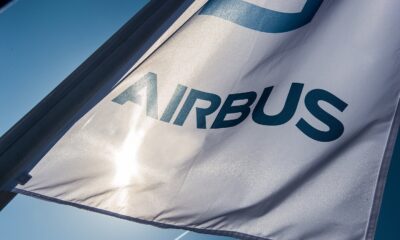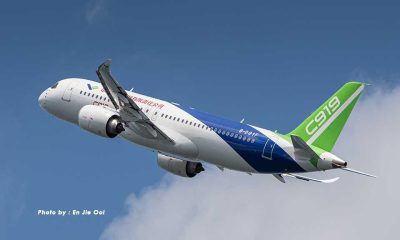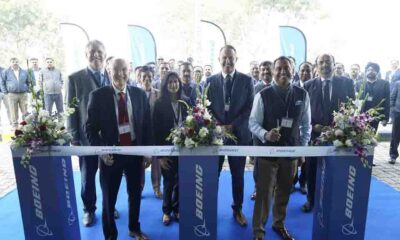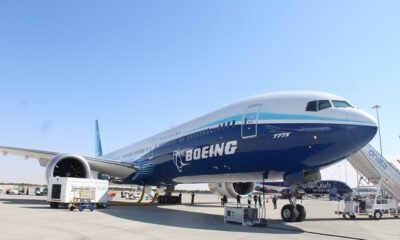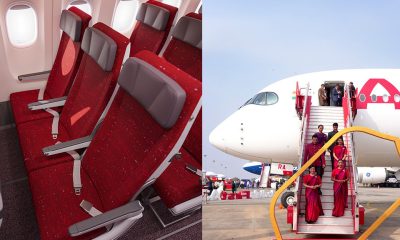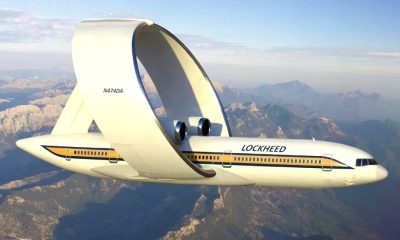Aerospace
5 interesting facts about Boeing 787 Dreamliner .
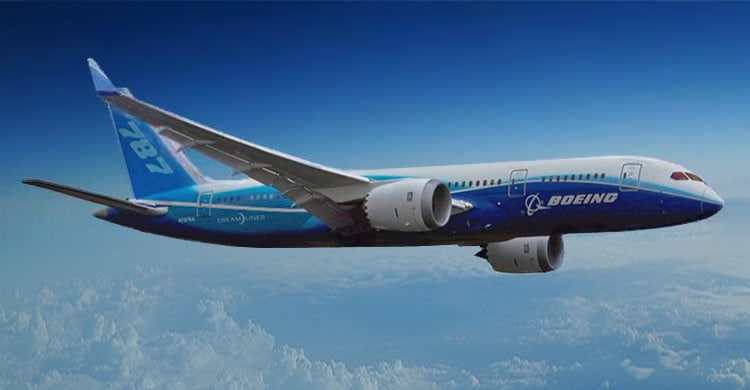
The Boeing 787 Dreamliner, which first flew in December 2009, is the company’s “technological marvel” and the result of hundreds of engineers from around the world working together. This aircraft is particularly impressive to Aversan because of its creativity and how it employs technology to improve the cabin experience, environmental friendliness, and other essential considerations.
1. The Dreamliner is Boeing’s most ecologically friendly airliner for two reasons. First and foremost, this is Boeing’s most fuel-efficient airliner, with a 20 percent fuel efficiency advantage over the 767.
Emirates To Take Final Airbus A380 Delivery In November 2021
2. Ease the pressure : The aircraft’s fuselage is made of carbon fiber, which makes it stronger and allows the cabin pressure to be maintained at a lower level. This increases the amount of oxygen and humidity in the cabin, reducing the effects of jet lag and making the flight more comfortable for passengers and crew.
3. The Boeing 787 is a 100% bleed-free aircraft. This implies it lacks a method for removing air from the engines’ compressor stages. Bleed air is mostly required for the following purposes:
- An anti-icing system: To prevent ice from forming on the wings and engines, most aeroplanes use hot bleed air from the engines. The B787, on the other hand, uses electro-thermal system to keep the edges of the wings warm and prevent ice from forming.
- Air conditioning systems: Instead of using bleed air from the engines, the B787’s engines power an electrically driven compressor, which then powers the plane’s air conditioners.
- Engine start: most planes use high-pressure bleed air from the APU. However, instead of bleed air, B787 uses powerful electrical motors to spin the engines’ compressors at first.This means the engines are used only as a source of propulsion and nothing else. This is the main reason why the B787 is more fuel-efficient.
FAA issued 737 MAX’s LEAP-1B engine corrosion issue
4. The Dreamliner’s new windows are made of two thin layers of glass :
The windows on the 787 are the largest ever seen on any plane, measuring 47 by 28 centimetres (19 inches high). The 787’s windows are 65 percent larger than any previous aircraft window, according to Boeing.
Instead of traditional pull-down shades, the Dreamliner’s windows feature a specific mid-layer that can be dimmed using a switch. An electrical current is routed through a transparent gel containing minerals capable of creating color using electrochromic technology. When the passenger clicks the darkening window button, the current rises, causing the gel to darken. It’s also not an all-or-nothing situation. The passenger can block sunlight from entering the cabin while still seeing out the window by adjusting the tint to the desired level.
10 facts to know About Easy jet Airline
5. Wing :
The 787’s raked wingtip, where the wing sweeps upwards at the end, is one of its most distinctive features. Its purpose is to improve the aircraft’s fuel efficiency and allow it to climb more efficiently. This is most likely the first time we’ve seen something like this in a commercial service.

Aerospace
China Secures Production Certificate for Mass Production of Pilotless eVTOL Aircraft
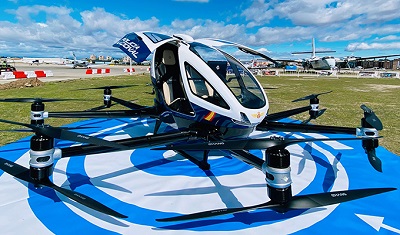
The first passenger-carrying pilotless electric vertical takeoff and landing (eVTOL) aircraft in the world, the EH216-S, has received the Production Certificate for its eVTOL aircraft from the Civil Aviation Administration of China (CAAC).
This is a significant milestone for EHang Holdings Limited, the leading UAM technology platform company in the world. This outstanding accomplishment is another big step towards mass manufacturing for the eVTOL aircraft and the ensuing commercial operations, building on the ground-breaking acquisition of the Type Certificate and the Standard Airworthiness Certificate for the EH216-S.
The PC is a crucial certificate that the aircraft maker receives from the CAAC, the country’s aviation authority. By obtaining this certificate, EHang has demonstrated that it has set up a quality management system for mass production that satisfies the airworthiness regulation standards set forth by the CAAC, and the company has been given permission to continue producing mass quantities.
It is also a strong guarantee of the calibre of the goods made by EHang. Raw materials, supplier management, manufacturing organisation, production quality control, aircraft pre-delivery test, after-sales repair and maintenance, etc. are all included in the mass production quality management system for the EH216-S.
To ensure that every aircraft and its components that roll off the production line strictly adhere to the approved type design and safety requirements, the system sets clear guidelines and documentation for every step in the production procedure. This ensures comprehensive traceability and safety control.
Aerospace
Four Airbus A380 Superjumbos lined up to be scrapped
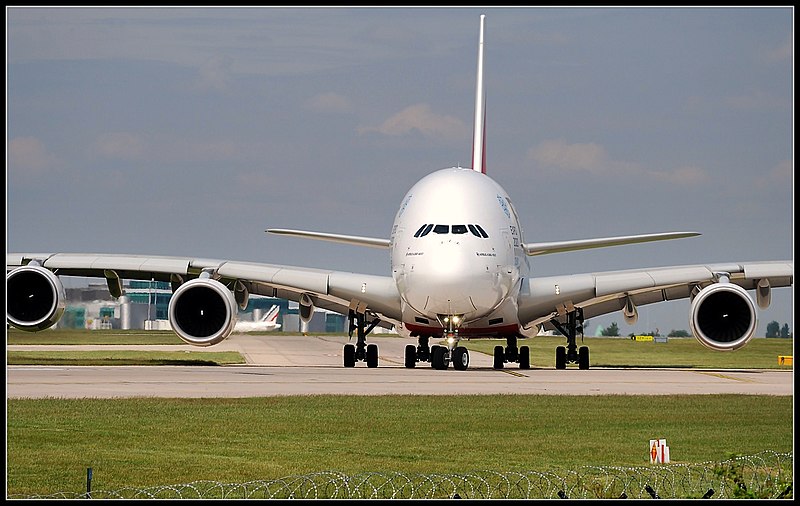
In a strategic move aimed at reclaiming valuable resources from the iconic Airbus A380 aircraft, VAS Aero Services and Dr. Peters Group have announced a significant collaboration.
This partnership marks a milestone in aviation logistics and aftermarket services, with four of these colossal planes slated for teardown and redistribution of used serviceable material (USM).
The venture between VAS Aero Services, renowned for its expertise in aircraft dismantlement, and Dr. Peters Group, a prominent Germany-based investment fund management firm, underscores a commitment to sustainable aviation practices. This isn’t their first foray into scrapping A380s; their successful partnership has already seen the dismantlement of these aircraft, making them pioneers in this niche.
Under the agreement, the latest consignment brings the tally to eight A380s entrusted to VAS by Dr. Peters Group. Managing Director Christian Mailly of Dr. Peters Group emphasized the trust placed in VAS, citing their unparalleled capabilities in dismantlement and aftermarket sales network. It’s a strategic move in response to the growing demand for quality USM parts, particularly with the resurgence in reliance on the A380.
Notably, the teardown process will be carried out at various locations, optimizing the positioning of harvested parts to cater to different markets. While some parts will be positioned in Europe to support operators in the region and the Middle East, others will remain in the Asia-Pacific region. This meticulous strategy ensures efficient access to spare parts, benefiting MROs and airlines across these markets.
The decision to retire these A380s comes at a time when operators are reassessing fleet strategies amidst evolving market dynamics. Despite initial plans for quick retirement due to the emergence of more fuel-efficient alternatives, factors such as a rebound in long-haul demand and delays in new widebody deliveries have prompted operators to reconsider. The A380, with its unique capacity and capabilities, presents a practical solution for short-term capacity management.
Aerospace
Rolls-Royce Launches Test Flights for Revolutionary Pearl 10X Engine
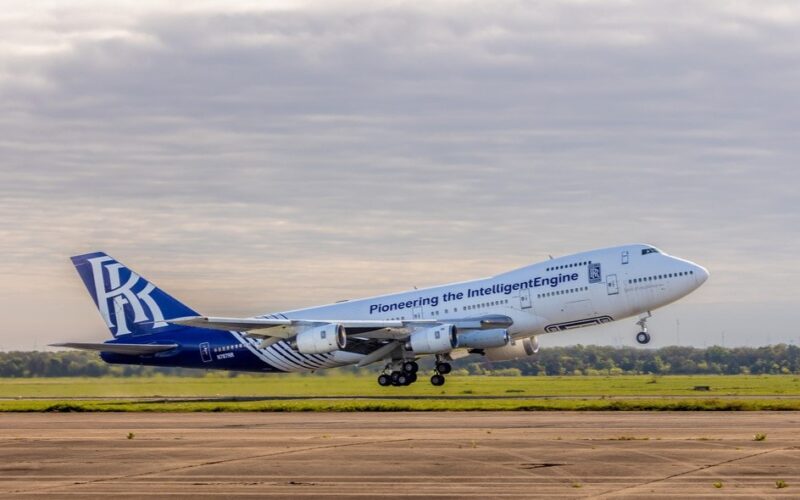
Rolls-Royce reports that the company’s dedicated Boeing 747 flying testbed has seen the successful start of the Pearl 10X, their newest aero engine designed for the business aviation industry.
Dassault, a French aircraft manufacturer, has decided to use this engine only to power their newest flagship, the Falcon 10X. As stated at last year’s Capital Markets Day, the commencement of flight testing represents a significant milestone for both Rolls-Royce and the Pearl 10X programme as the company concentrates on expanding in the business aviation industry.
The first Rolls-Royce engine to power a Dassault business jet is the Pearl 10X, the newest engine in the state-of-the-art Pearl engine family. The Pearl 10X was chosen by the French aircraft manufacturer as their new flagship model, demonstrating even more of Rolls-Royce’s dominance in the business aviation engine market.
Over the next few months, pilots and flight test engineers from Tucson, Arizona, USA, will put the engine through its paces. The flight test programme will comprise testing of the nacelle’s anti-icing system, in-flight relights, engine performance and handling checks at various speeds and altitudes, and fan vibration tests at various altitudes.
The new auxiliary gearbox, which enables higher additional power extraction, and the ultra-low emissions ALM combustor, which is compatible with 100% Sustainable Aviation Fuel (SAF), have undergone extensive testing as part of the ground-based development programme thus far. The engine will be the most potent business aviation engine in the Rolls-Royce lineup. It exceeded its intended thrust levels during the very first test run. With over 2,300 testing hours successfully completed on the Pearl 10X engine configuration as well as the Advance 2 demonstration, the programme is moving forward at a rapid pace.
With the most economical engine core available for business aircraft, the Advance2 engine, coupled with a high-performance low-pressure system, gives the Pearl 10X an exceptional thrust of over 18,000 lbf. With a 5% increase in economy over the previous generation of Rolls-Royce commercial aviation engines, the Pearl 10X

